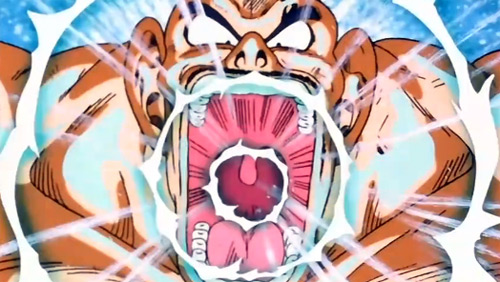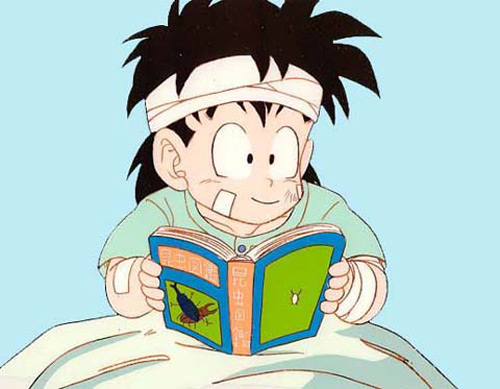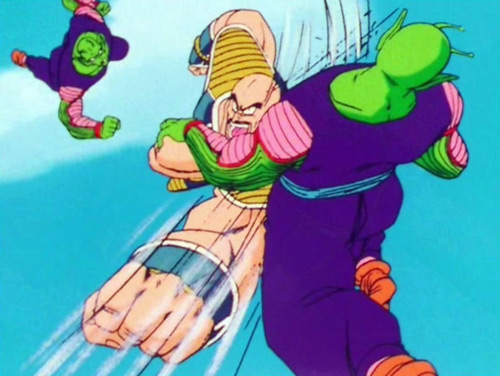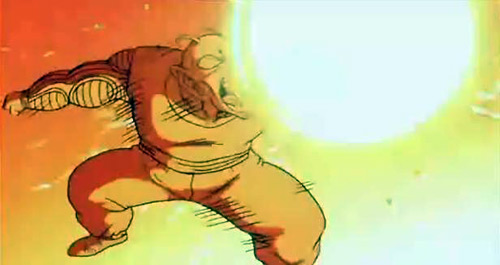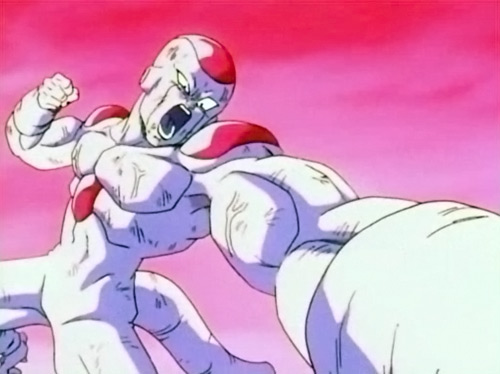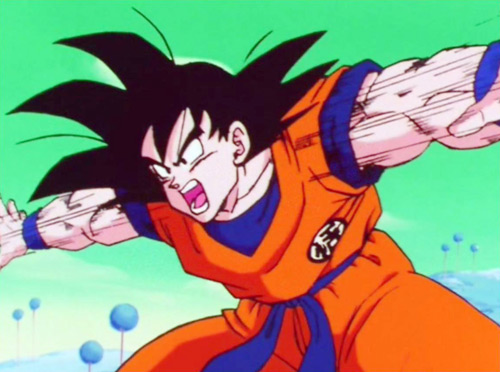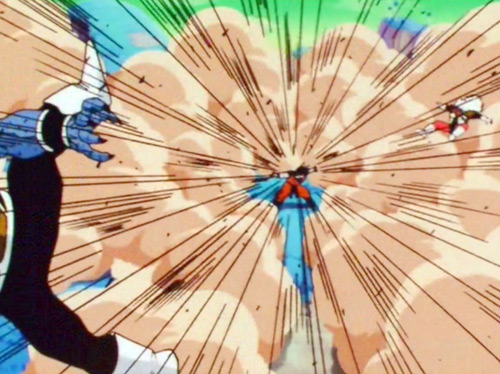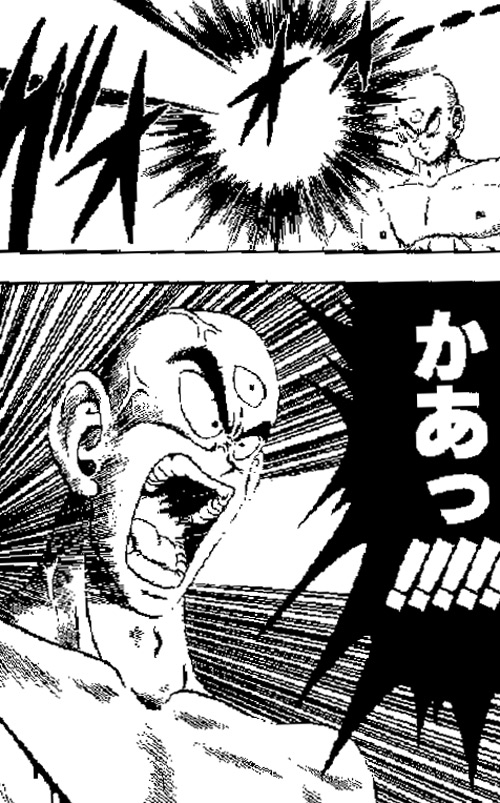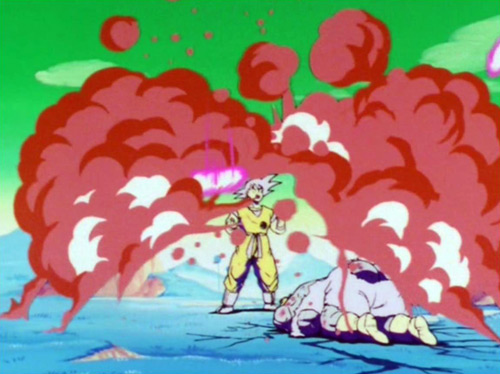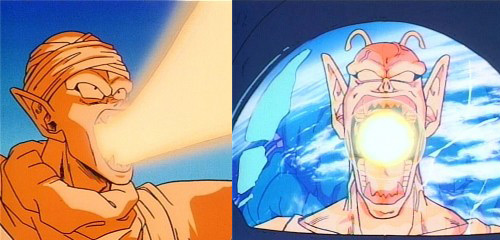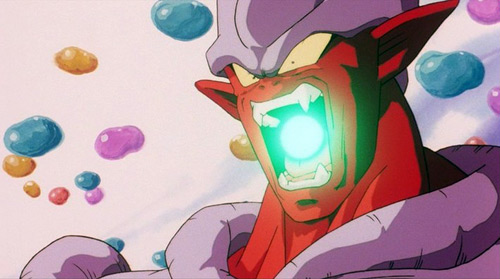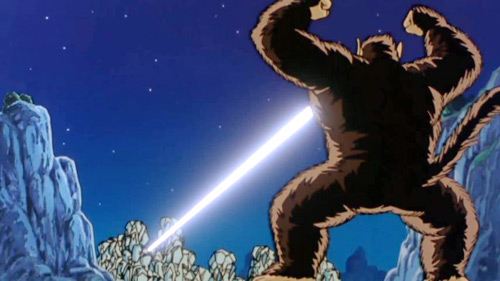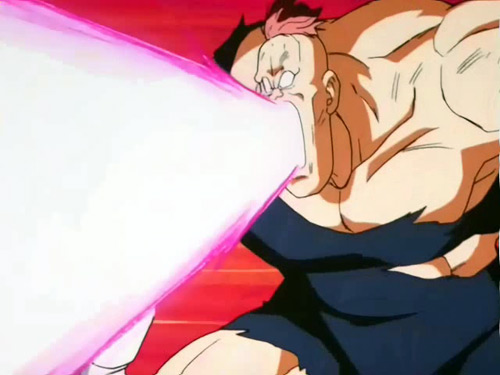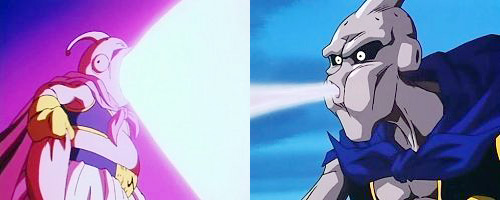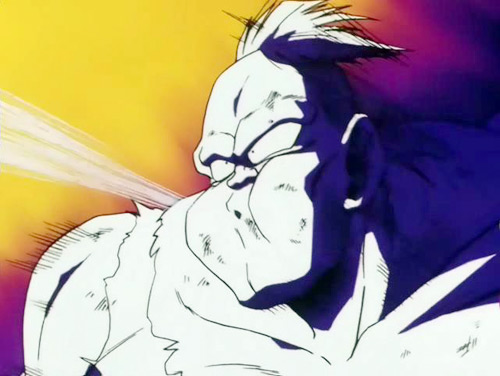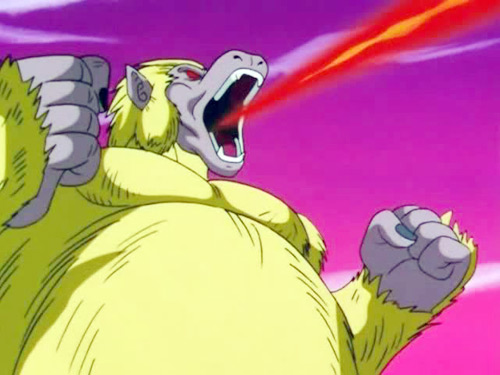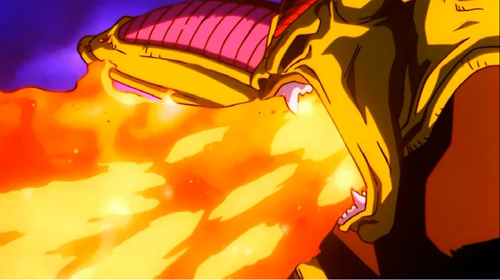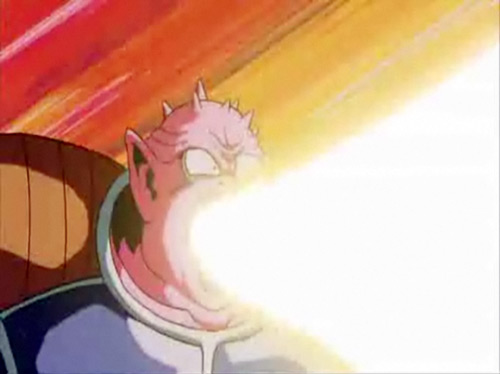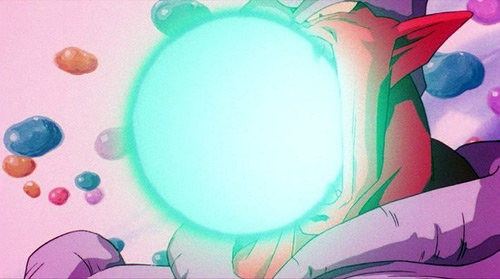The Kiai in Dragon Ball
In Japanese martial arts, the Kiai (気合) is commonly thought of as a loud yell that coincides with an attack. But it’s actually a method of breathing, and is so much more than a simple scream.
In Dragon Ball, the Kiai is taken to an extreme. While drawing upon ancient martial arts legends, Akira Toriyama gives a visual appearance to what used to be invisible. He also illustrates what the Kiai could be capable of when used by a supernormal martial artist.
Toriyama’s creation has inspired a lot of people to practice martial arts, and the Kiai is an integral aspect of eastern martial arts, so it’s important to understand.
From super powerful punches to shields of energy, let’s take a deeper look at the Kiai in Dragon Ball.
Understanding the Kiai
To have a better grasp of what the Kiai is in Dragon Ball, we first have to understand what a Kiai is in traditional eastern martial arts.
Different martial arts masters view the Kiai in different ways, and there are those that believe it is a simple exhalation of air, while others consider it a potent weapon in the martial artist’s arsenal.
Wendell E. Wilson of the Shuri-ryu dojo in Tucson, Arizona, wrote in his essay, ‘Kiai’, “The subject of the kiai is complex and profound, involving critical aspects of the body, the mind, and the spirit, having numerous uses and applications. In truth, no one masters or even understands a martial art without mastering the kiai. … ‘The yell’ is not a trivial, expendable, slightly silly bit of melodrama; rather, it is a core concept and an essential skill to be taken very seriously and to be practiced and refined at every opportunity.”
The character for Ki (気), known as Qi in Chinese, refers to the ‘breath,’ ‘air’ or ‘spiritual energy’ of life. The character for ai (合) is a combination of characters, the top part (亼) meaning “to gather or collect,” and the bottom part (口) meaning, “mouth.”
A literal translation of Kiai could be, “to gather Ki together in the mouth,” and with the given context of the martial arts, it could be translated as, “to gather Ki together and project through (or out of) the mouth.”
Despite this literal translation existing, Kiai is often stated as meaning “to harmonize,” in that you harmonize your energy with that of your opponent, whether to subdue them peacefully or manipulate and defeat them.
These characters are also found in the martial art Aikido (合気道), where the Ai and Ki are in the opposite order. In Aikido, a Kiai is used to instill a peaceful harmony or subjugation of the opponent through a meeting of energies via movement. The compassionate philosophy of Aikido is actually a rarity in Japanese martial arts and a relatively new concept, so the traditional meaning is still relevant.
In a traditional sense, the uniting effect of the Kiai is found within the individual practitioner as he unites his mind and body with proper timing and execution.
At a higher level, a Kiai is a complete unification of time and space, spiritual energy and power, mental willpower and determination, compressed and directed at a single point. The body’s concentrated power is let out during the Kiai, which can precede, coincide, or follow the moment of impact, depending on the technique or style.
How the Kiai Works
Basic training for the Kiai involves breathing exercises, similar to the Pranayama practices of India. The practitioner breathes from the lower abdominal area, setting the Ki in motion.
The lower abdominal area of the body is referred to as the Hara (腹) in Japanese, and the Dan Tian (丹田) in Chinese martial arts. It is an important part of the human body, and the place where energy is developed and stored.
Practitioners also perform mind intent exercises to strengthen their will and direct their intent.
Once a sufficient amount of Ki had been built up in the practitioner’s body, they would then practice their yells in outdoor environments. Starting from the lower abdomen, below the belly button, the practitioner quickly expels their Ki and breath while directing it with their mind. An objective was to become louder than nearby oceans, or silence the animals of forests and mountains.
Others use silent Kiai’s during meditation as a concentrated expression of will. And the silent Kiai’s are considered the most difficult yet most powerful to use in battle.
That said, keep in mind there are different types of Kiai, and high volume is not a necessity. It is the proper application that is important. Remember that a Kiai is the unification of spirit and body through the mouth. The most important part is the unification. In battle, high level masters may only make a subtle noise, or none at all, yet the Kiai is still fully executed.
The Kiai can also be used defensively, to harden the body and protect internal organs. The sudden tension followed by immediate relaxation reduces the sensation of impact. Trained martial artists can survive falls from great heights, or otherwise deadly blows, by using such techniques with proper timing.
When performed, the sounds expressed can vary depending on whether it is an offensive or defensive technique. Sounds such as, “hah,” “ah,” “ey”, “ay-sah”, “hai”, “toh,” “yah”, “ohs”, “hup” and others can be heard. Both long and short exhalations exist, and can be done before a technique, during, or after. There is no actual meaning to the vocal expression.
Kiai Jutsu
Actually using and refining the Kiai as a weapon is known as Kiai Jutsu (気合術). Kiai Jutsu can be considered the art of attacking (or healing) through the voice.
This art was considered very esoteric and secretive, taught only to professional warriors or senior students. Through years of dedicated training a practitioner was said to be able to use their own voice as a weapon, like a lion’s roar.
In this form, Kiai-Jutsu was used to knock opponents unconscious or cause mortal harm, without touching the opponent physically. This was known as a “touchless weapon.” They could ring a bell from a distance, stop a punch or kick in mid-strike, knock people over, shock an opponent into paralysis, or even cause birds to fall from their perch. In Japanese, this technique was referred to as “Toate-no-Jutsu” (遠当ての術), meaning “the art of striking from a distance.”
The Kiai Jutsu practitioner would channel the energy from their lower abdomen, and from throughout their body, and out the mouth. The energy wave would be directed at a target via mind intent.
Today, Kiai Jutsu as a “touchless weapon” can be found in dojo’s, but is ridiculed as a scam martial art and highly criticized by skeptics as something promoted by charlatans. Practitioners of the techniques state in their defense that it is because the skeptics, when subject to the Kiai, are not sensitive to Ki, or that martial artists of other practices are not sensitive to the master’s particular energy. This means they do not respond like a normal martial artist would, such as collapsing unconscious, or being pushed and pulled around by the energy. Instead, they suffer long term harm to their organs on a subtle level.
Students who are sensitive to the master’s energy, or profess to be able to use the technique, describe it in various ways: A shockwave, a surge, a type of wind, intense heat, blurred vision and deafness, or an electric buzz. And Veteran martial artists in the United States, who practiced in the 50’s, 60’s and 70’s, have made claims to experiencing such things while in Japan.
But to the skeptics, the practice is debunked as nothing more than psychological manipulation of the master’s students. Or as Mister Satan from Dragon Ball Z would say, “Tricks.”
Therefore, whether or not Kiai Jutsu’s “touchless weapon” is real is subject to personal opinion or belief, hopefully based on experience, rather than conjecture.
There are no known surviving masters of the original art teaching publicly (if alive at all), and the complete style of techniques have been lost and become the source of legends. There are a few schools across the world that still teach Kiai Jutsu’s “touchless weapon,” but they are subject to ridicule by those who seek scientific evidence and proof.
Only the basic aspects of Kiai Jutsu remain in the eastern martial arts world as a whole, and are found in the majority of practices.
The Kiai is an integral part of proper training, and masters of an art have strong Kiai’s, but Kiai Jutsu as a “touchless weapon” is, generally speaking, no longer given credibility, except for those who profess to have experienced it.
There are however those who still teach Kiai Jutsu in tandem with the pressure point art known as Kyusho (急所). In this form it is for medical healing or reviving unconscious martial artists after pressure point manipulation and knockouts while training.
Kiai Jutsu in Dragon Ball
Here is where things get taken to the extreme. The Dragon Ball extreme!
The Kiai Jutsu technique is used by several characters in Dragon Ball, and it shows up in a lot of different ways, growing in magnitude and power as the series continues.
It’s never explicitly shown how the characters in Dragon Ball trained to use the Kiai as a supernormal projection of their Ki. Some of the characters have the ability while others either do not or never display it.
The characters use the Kiai’s in different ways, so let’s review some of them now.
For lack of specific terms, I provided generic terms for each of these technique categories.
Kiai Strike
The most common Kiai is that which accompanies a powerful strike. The proper timing of a Kiai strengthens their attack. This is a regular type of martial arts Kiai.
I can’t think of any of the warrior’s that don’t use this while fighting. One Kiai for just about every punch and kick.
Kiai Aura Blast
The Kiai Aura Blast is very similar to the “touchless weapon” technique. This is “the art of striking from a distance” exemplified.
Goku used the Kiai Aura Blast while fighting on Planet Namek against Jeice and Burter.
The two Ginyu Force members are attacking him simultaneously, one on his left, and the other on his right. Goku quickly enters a martial arts horse stance, crosses his arms, and then Kiai’s while extending both arms out to the side while looking forward.
The result is a gigantic invisible shockwave that sends both opponents flying away. Dust goes everywhere and Jeice and Burter try to recover in mid-air.
This appears to be an omnidirectional Kiai: A transparent aura blast that rapidly radiates outward. This is important to point out because other aura blasts in Dragon Ball have clearly observable Ki that emanates from the practitioner. The one Goku used did not.
Uub also showed this technique at the end of Dragon Ball Z. He was able to do this technique without any training, when Goku made him so furious with rage that he screamed in Goku’s direction.
Kiai Shield
There are a couple examples where we see the Kiai Shield.
The first is when Tenshinhan is fighting his revenge match against Tao Pai Pai, the Crane Hermit’s little brother, at the 23rd Tenkaichi Budokai.
Tao Pai Pai fires his Super Dodonpa energy beam at Tenshinhan, who defiantly stands in place. Tenshinhan is so angry and disgusted with Tao Pai Pai’s lack of warrior ethics that he chooses to take the beam head on in an action that also represents the moment he surpassed his former instructor.
But instead of Tenshinhan blocking it with his hands or using some other technique, he Kiai’s.
After the dust clears, Tenshinhan is left standing in the ring, completely untouched and unmoved. He then rushes toward Tao Pai Pai and knocks him unconscious with a single blow.
Another time we see the Kiai shield is when Goku is fighting against Nappa during the Saiyan arc. Goku has just arrived to the battlefield, and Nappa attempts to blow him away. Goku stands in place, puffs out his chest while raising his arms up in the air, and Kiai’s.
Nappa’s blast is completely negated before it even touches Goku’s body.
Goku uses this same technique while fighting against Burter and Jeice on Planet Namek, where they are throwing multiple energy balls at him. He Kiai’s and surrounds himself with an invisible shield that blocks all of the projectiles.
And like the Kiai Strike, the Kiai Shield can be used repeatedly during a fight, such as when absorbing blows or suffering a great fall or impact. Martial artists in the real world frequently use a defensive Kiai when taking hits, so it’s highly likely that the Dragon Ball warriors do the same thing.
Kiai Energy Beam
In Dragon Ball, unless a Kiai technique has its own special name, this type of Kiai is generically referred to as a Mouth Blast. In Japanese, this would be Kuchi Kara KiKoHa (口から気功波), which can be translated as “Ki Skill Mouth Wave.”
This is the type of energy technique from the mouth that most people think of when it comes to DBZ.
Many of the “evil” characters in the series have this ability, such as Piccolo Daimao, Piccolo Daimao Jr., Dodoria, Nappa, Recoome, Cell, Majin Buu, Janemba, and the Oozaru that each Saiyan can transform into.
This technique involves collecting the energy of the body into the mouth and projecting it outward as a beam. There are different colored beams for each character, depending on their individual characteristics.
Because the beam is made of high energy matter, it often explodes on impact or penetrates through defenses.
According to western physics, light exhibits characteristics of both particles (rays) and waves. Most of these types of Kiai’s resemble light rays, or beams, rather than waves.
There is the also the unique case where Majin Buu and Gotenks are trapped in the Room of Spirit and Time inside Kami’s Lookout. They both Kiai with such power that it rips a hole through time and space, allowing them to escape their dimensional prison.
Kiai Energy Wave
Similar to the Kiai Energy Beam, the Kiai Energy Wave is a collection of energy projected out of the mouth. But this time it comes out as a destructive wave, instead of a beam.
Theoretically, the Ki mixes with breath and is then projected forward as a high energy material substance.
For example, in the Majin Buu arc, Babidi orders Majin Buu to destroy a city, and he does so with a Kiai Energy Wave. He takes a really huge inhale, and gives a super elongated exhale of pink Ki waves that is so visibly powerful that it levels the entire city, like the shockwave from a nuclear blast.
Recoome also uses the breath variant technique on Planet Namek fighting against Gohan.
These techniques are in many ways similar to Superman’s super breath. The difference is that because these waves are made of high energy matter, rather than air alone, they are far more destructive.
Alternate Kiai’s
There’s also a different type of Kiai Energy Wave where the character breathes fire.
Dabura does this in the Majin Buu arc. He inhales air and then breathes fire at his opponent, as if he were drawing it up from within his body.
And in Dragon Ball GT, when Goku transforms into the towering Golden Oozaru, he shoots red hot fire out of his mouth in a projected stream. This stream of fire is different than the regular Oozaru Kiai Energy Beam.
Lastly, in Dragon Ball Z Movie 13: Wrath of the Dragon, the giant monster Hildegarn uses a similar technique to project a huge stream of flame from its mouth.
Because of their giant nature, in the case of the Oozaru, Golden Oozaru, and Hildegarn, these types of streams can be likened to Godzilla’s radioactive breath, rather than a traditional Kiai. Toriyama was a fan of Godzilla movies and giant monsters as a child, and so it’s easy to see these same characteristics in the monster’s deadly breath.
Ancient and Modern Kiai’s
Can you now see the string that connects the Kiai’s of traditional Japanese martial arts to the Kiai’s in Dragon Ball?
Dragon Ball’s fighting styles and techniques are rooted in eastern martial arts, which are themselves rooted in religions and spirituality.
Some of this may appear unbelievable or unscientific, but to the warriors of the past, such abilities seemed very real, or at least possible.
Even today there are still some martial artists that take the Kiai and its more supernormal aspects to be real because of their own experiential evidence.
Dragon Ball takes these concepts and the possibilities of such powers to an extreme, and then uses them to weave an interesting tale of mighty warriors.
Why don’t the martial artists of today have such abilities?
Maybe it’s impossible.
Or maybe they aren’t training hard enough!
Increase Your Kiai Power
If you are interested in learning more about the Kiai, please see the resources below or conduct your own research.
Better yet, start taking a martial art and find out for yourself whether or not the Kiai is real.
If you decide to walk the path of a warrior, then perhaps this advice will help.
Wendell E. Wilson ended his ‘Kiai’ essay with the following recommendation. “Don’t be shy with your Kiai… it is nothing less than your source of power and your route to victory.”
Further Resources
- http://mineralogicalrecord.com/wilson/karate.asp
- http://www.martialartsplanet.com/forums/showthread.php?t=19771
- http://www.fightingarts.com/reading/article.php?id=158
- http://rizsmartialartstraining.blogspot.com/2009/04/thoughts-on-ki.html
- http://www.jigokudojo.org/toate.htm
- http://www.shotokai.com/shotokaiforum/viewtopic.php?t=184
- http://shotokai.com/ingles/gallery/tokitsu/itinerary2.html
- http://www.youtube.com/watch?v=zIXZ4e8x9V0
' . $comment->comment_content . '
'; } } else { echo 'No comments found.'; }